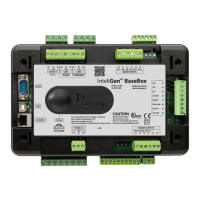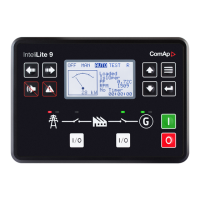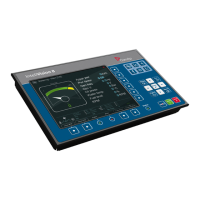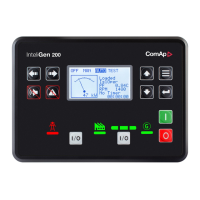The setpoint is used to adjust the requested power factor at the mains when PF
ctrl PtM = PF-IM/EX. Values over 1.00 mean capacitive load character.
EXAMPLE:
Setting 0.95 means 0.95L and setting 1.05 means 0.95C.
The setpoint is used for selection of the load control mode in parallel to mains
operation.
BASELOAD: Gen-set load is maintained at constant level adjusted by the
setpoint Base load.
IM/EX: Gen-set load is controlled so, that the mains import is maintained
constant at the level adjusted by setpoint Import load.
ANEXT BASELOAD: Gen-set load is maintained at constant level given
by the analog input LdCtrl:AnExBld.
ANEXT IM/EX: Gen-set load is controlled so, that the mains import is
maintained constant at the level given by the analog input LdCtrl:AnExI/E.
This option is available in IS-NT only.
T BY PWR: Gen-set load is controlled so, that the analog input
LdCtrl:TByPwr is maintained at constant level given by setpoint
TempByPwr Treq. The regulation loop is adjusted by setpoints
TempByPwr gain and TempByPwr int. This option is available in IS-NT
only.
NOTE:
If the baseload value needs to be changed remotely via a communication
interface select the ANEXT BASELOAD mode and then configure one of the
objects ExtValue1 .. ExtValue4 as the source for the analog input LdCtrl:AnExBld.
These objects can be written remotely via communication (e.g. via MODBUS).
CAUTION!
Do not use cyclic write of the baseload setpoint for remote load control. It may
cause the internal EEPROM memory damage.

